As I mentioned, I was the cook, so my botanising was limited although I managed to take some photos, some of which I'll be posting here over the next few days. The food went pretty well. I made a huge vegie curry, and a pesto pasta chicken salad, as well as more sandwiches than I thought humanly possible. The interns and staff didn't starve or die from food poisoning, so I guess it was successful!
I thought that rather than posting photos here in chronological order, I'd present them by family or location. To start with, some orchids. There were both Cryptostylis erecta and subulata about, but I've already posted images of those, so here are some others.
This delicate orchid, Genoplesium fimbriatum, or Fringed Midge Orchid, is far smaller than the image might suggest. The flower is only around a centimetre in diameter. It lacks leaves and is found only on the Australian East coast. Here is the entire plant:
A rather more showy orchid is this Dipodium sp., a Hyacinth Orchid.
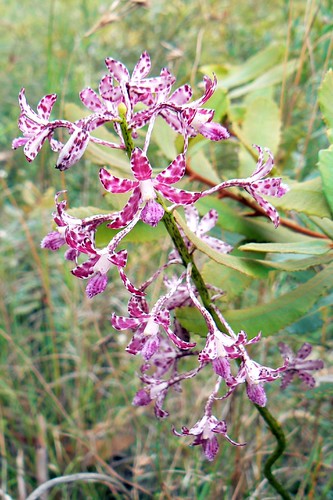
Both these specimens were found at the Bulgandry Aboriginal Site in the Brisbane Waters National Park. Below is the boardwalk surrounding ancient Aboriginal rock carvings, including that of "Bulgandry Man". You can see images of the carvings here.
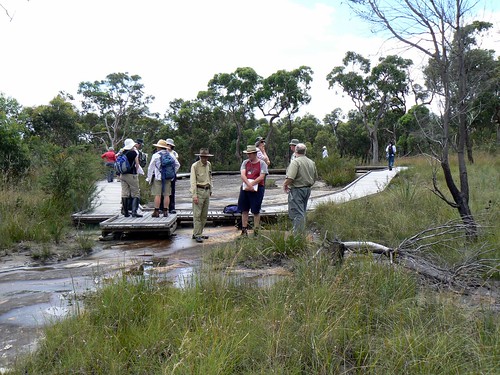

Actinotus minor, a smaller species in the same genus as the more famous Flannel Flower of which I've previously posted an image, is plentiful at this site. The flower is tiny, and only with close observation would you realise that it's very similar to its bigger cousin.
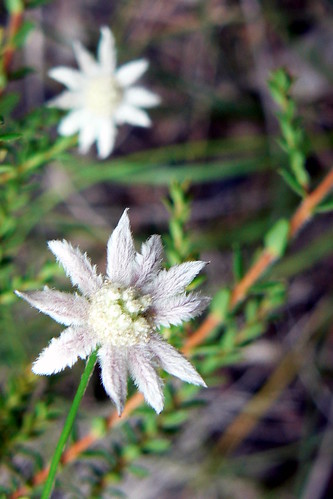

Finally, the moist sandstone heath of Bulgandry is home to this, the Drosera spatulata, a tiny carnivore. The sticky, spatulate leaves, catch small insects.

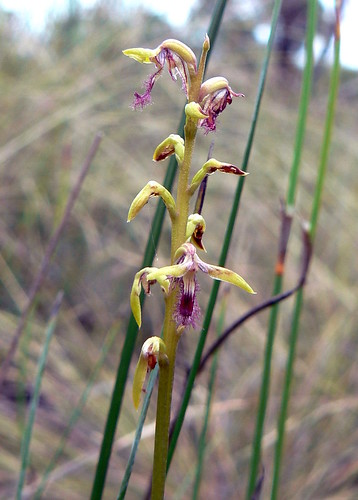
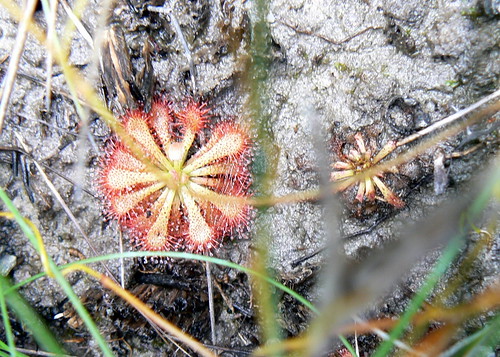
6 comments:
I am so pleased that I discovered your blog - on a cold, snowy day, it was great to see some beautiful flowers. I enjoyed reading about the Crommelin Station - what an interesting woman who bequeathed the property! The orchids are gorgeous and the Drosera was adorable.
I imagine your cooking tasted delicious - what fun this must have been. I have never heard of the Bulgandry Aboriginal Site... what an interesting carving.
I will be back to check out your links!
Hi Kate--and welcome!
Yes, I can imagine my blog is quite a contrast with life on the frozen Canadan prairies. Hope you'll return: I have lots more photos to post.
Cheers,
Margaret
Hi Margaret -
Interesting post as always. Nice shot of Genoplesium fimbriatum I've never seen this orchid. Is it in flower down our way or do I need to drive further up the F3 :D!
Cheers -
David.
G'day, David! I hadn't seen Genoplesium fimbriatum before either, but according to PlantNET, it occurs in our part of the world and flowers from January to May. However, if you're looking for a nice day trip to Brisbane Waters National Park on this jolly public holiday, here are the precise directions from the CSIRO site on Bulgandry I linked in the post:
"Drive up the F3 freeway from Sydney, and take the turning signposted to Woy Woy and Gosford. [Go through Kariong.] About 3km from the Pacific Highway, on the road to Woy Woy, you will see a small NPWS sign on the right announcing the location of Bulgandry Aboriginal Engraving Site. Enter the track, park in the carpark, and follow the path to the site."
When you get to the boardwalk, you'll find some specimens on the NE margin of the boardwalk. There are quite a few there. Happy hunting!
Cheers,
Margaret
Very cool! Love the plants you photography. Here in my part of the U.S., it's winter and all the plants are dormant or dead for the winter. Thanks for the flowers and the green!
Charles, I'm channelling the Sydney heat and humidity in your direction. Hope it helps. ;)
Post a Comment